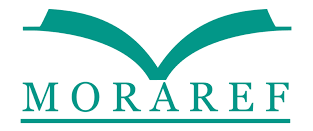THE PROTOTYPE OF GUIDANCE IN TRANSLATING MENU TEXT ASSET: A STUDY OF VIDEO GAME LOCALIZATION
DOI:
https://doi.org/10.22515/crossover.v1i1.3735Abstract
This study intends to create a guidance in translating video game text asset, mainly the menu in the game text asset. The research is done by identifying the game text asset, the techniques of translation applied, the quality of translation, the impacts caused by the usage of the techniques and its quality, and finally propose the recommended techniques to be used as guidance based on those aspects. In analyzing data, the researcher used a descriptive qualitative method using a case study of menu in a video game, namely Dragon Nest. The data were verified by experts in translation studies, linguistic, and video game. The sampling technique used was purposive sampling. Data collection techniques were carried out by document analysis, Foum Group Discussion (FGD), and questionnaire. Validation was done by data source triangulation and expert validation. Then the data analysis technique is using Spradley’s (1980) model of data analysis. The result of the study shows that the guidance in translating menu text asset of video game text should use these translation techniques (in order): Established Equivalence, adaptation, pure borrowing, and naturalized borrowing.
Downloads
References
Bernal Merino, M. A. (2006). On the Translation of Video Games. The Journal of Specialised Translation, issue 6.
Bernal Merino, M. A. (2007). Video games as a new domain for translation research: From translating text to translating experience. Revista Tradumàtica, vol. 5.
Bernal Merino, M. A. (2015). Translation and Localisation in Video Games. Making Entertainment Software Global. New York/London: Routledge
Bushouse, E. (2015). The Practice and Evolution of Video Game Translation: Expanding the Definition of Translation. Masters Thesis: University of Massachusetts
Catford, J.C. (1978). A Linguistic Theory of Translation. Oxford: Oxford University Press
Chandler, Heather M. dan Stephanie O’Malley Deming. (2012). The Game Translation Handbook (2nd ed.). Sudbury, MA: Ontario/London: Jones & Bartlett Learning.
Costales, A.F. (2017). Exploring Translation Strategies in Video Game Localisation. MonTI, vol. 4, hlm. 385-408.
Creswell, J W. (2014). Research Design: Qualitative, Quantitative, and Mixed Methods Approaches (4Th ed). United State: sage Publication, Inc.’s Thesis. Ankara: Atilim University.
Esselink, B. (2000). A practical guide to translation, Amsterdam: John Benjamins Publishing Company.
Hyttinen, M. (2016). Bringing the Foreign into Play: Cultural Transfer in Video Game Translation. Master Thesis: University of Tampere. Journal of Specialised Translation, vol. 16.
Larson, M. L. (1984). Meaning Based Translation: A Guide to Cross language Equivalence. Lanham: University Oress America, TM Inc.
Mangiron, C. & O’Hagan, M. (2006). Game Localisation: Unleashing Imagination with ‘Restricted’ Translation. The Journal of Specialised Translation, vol. 6.
Mangiron, C. & O’Hagan, M. (2013). Game Translation: Translating for the Global Digital Entertainment Industry. Amsterdam/Philadelphia: John Benjamins.
Molina, L., & Albir, A.H. (2002). Translation Techniques Revisited: dynamic and Functionalist Approach. META Journal, XLVII,4, 2002.
Nababan, M.R., Nuraeni, A., and Sumardiono. (2012). Model Kualitas Terjemahan. Jurnal Kajian Lingustik dan Sastra, 24,1, 29-57.
Newmark, P. (1988). A Textbook of Translation. New York: Prentiice-Hall International.
Nida, E A., & Taber, C. R. (1982). The Theory and Practice of Translation. Leiden: E.J. Brill
O’Hagan, M. (2007). Video games as a new domain for translation research: From translating text to translating experience. Revista Tradumàtica, vol. 5.
O’Malley-Deming, S. (2018). The right tools for the right job. Presented at Translation World International Conference. San Francisco, 20 October. Manuscript.
Purnama, SF. L.S (2014). Analisis Dampak Terjemahan Pre-Battle Dialogue Terhadap Myth Yang Direfleksikan Hero Dalam Trilogi Video Game Devil May Cry Karya Capcom (Pendekatan Popular Culture). Master Thesis: Universitas Sebelas Maret.
Ricoy, P. (2016). Multimodality in translation: Steps towards socially useful research. Journal Multimodal Communication, vol.1. no, 2, pp. 181-203.
Silalahi, R. (2009). Dampak Teknik, Metode, dan Ideologi Penerjemahan pada Kualitas Terjemahan Teks Medical-Surgical Nursing dalam bahasa Indonesia. Published Disertation. USU.
Sutopo, H.B. (2006). Metodologi Penelitian Kualitatif: Dasar Teori dan Terapannya dalam Penulisan Edisi Kedua. Suarakarta: Sebelas maret University Press
Toury, G. (1995). Descriptive Translation Studies and Beyond. Amsterdam & Philadelphia: John Benjamins Publishing Company.
Downloads
Published
How to Cite
Issue
Section
Citation Check
License
Copyright (c) 2021 CrossOver : Journal of Adaptation Studies

This work is licensed under a Creative Commons Attribution-ShareAlike 4.0 International License.
Authors retain copyright and grant the journal right of first publication with the work simultaneously licensed under a Creative Commons Attribution 4.0 International License that allows others to share the work with an acknowledgment of the work's authorship and initial publication in this journal.

















